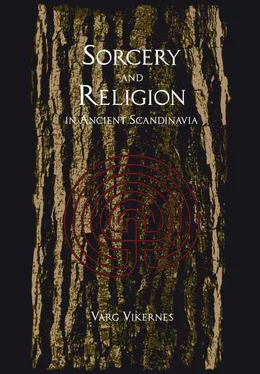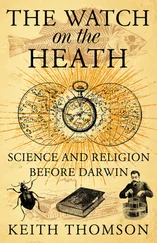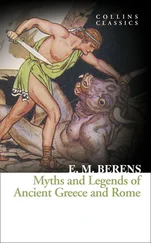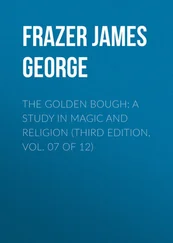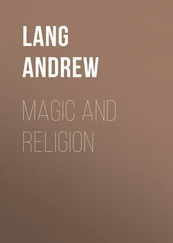Vikernes, Varg - Varg Vikernes - Sorcery and Religion in Ancient Scandinavia
Здесь есть возможность читать онлайн «Vikernes, Varg - Varg Vikernes - Sorcery and Religion in Ancient Scandinavia» весь текст электронной книги совершенно бесплатно (целиком полную версию без сокращений). В некоторых случаях можно слушать аудио, скачать через торрент в формате fb2 и присутствует краткое содержание. Жанр: Старинная литература, на английском языке. Описание произведения, (предисловие) а так же отзывы посетителей доступны на портале библиотеки ЛибКат.
- Название:Varg Vikernes - Sorcery and Religion in Ancient Scandinavia
- Автор:
- Жанр:
- Год:неизвестен
- ISBN:нет данных
- Рейтинг книги:3 / 5. Голосов: 1
-
Избранное:Добавить в избранное
- Отзывы:
-
Ваша оценка:
- 60
- 1
- 2
- 3
- 4
- 5
Varg Vikernes - Sorcery and Religion in Ancient Scandinavia: краткое содержание, описание и аннотация
Предлагаем к чтению аннотацию, описание, краткое содержание или предисловие (зависит от того, что написал сам автор книги «Varg Vikernes - Sorcery and Religion in Ancient Scandinavia»). Если вы не нашли необходимую информацию о книге — напишите в комментариях, мы постараемся отыскать её.
Varg Vikernes - Sorcery and Religion in Ancient Scandinavia — читать онлайн бесплатно полную книгу (весь текст) целиком
Ниже представлен текст книги, разбитый по страницам. Система сохранения места последней прочитанной страницы, позволяет с удобством читать онлайн бесплатно книгу «Varg Vikernes - Sorcery and Religion in Ancient Scandinavia», без необходимости каждый раз заново искать на чём Вы остановились. Поставьте закладку, и сможете в любой момент перейти на страницу, на которой закончили чтение.
Интервал:
Закладка:
Sorcery and Religion
in Ancient Scandinavia
By Varg Vikernes
Contents
Prologue
1.0 From the dim Mist of Antiquity
1.1 Animism
1.2 Sorcery
1.3 Religion
1.4 The Mistletoe
1.5 The Matriarchy
1.6 The Patriarchy
2.0 The Calendar Woman
2.1 The Sun's Calendar
2.2 The Mysteries
3.0 The Divine Secrets
3.1 The Runes
3.2 Freyr's Group of eight
3.3 Hagall's Group of eight
3.4 Týr's Group of eight
4.0 Völuspá
4.1 The Prophecy of the Sorceress
4.2 Freyr's First Group of eight
4.3 Hagall's First Group of eight
4.4 Týr's First Group of eight
4.5 Freyr's Second Group of eight
4.6 Hagall's Second Group of eight
4.7 Týr's Second Group of eight
4.8 Freyr's Third Group of eight
4.9 Hagall's Third Group of eight
4.10Týr's Third Group of eight
5.0 The Mystery Chamber
5.1 The Hiding Place of the Dead
6.0 The Voice of the Forefathers
6.1 The Eggjum Stone
6.2 Ívarr Ellison
6.3 The Love of the Grave
Epilogue
Name Registry
Prologue
This book is written as an attempt to describe the traditions and beliefs of the Ancient Europeans. I have studied the subject for almost two decades and yet I can only list two books about this subject, The Golden Bough , by the anthropologist Sir James Frazer, and Fedrekult i Norge (“Ancestral Cult in Norway”), by the missionary and historian Otto Emil Birkeli, as any real help when writing this book. I have been forced to look for answers mainly in the etymology and original texts, but also in old fairy tales, traditional songs and Norwegian folklore.
My hypotheses in this book are based on the claim that all the tribes of Ancient Europe originally had the same religion, whether they lived in Europe or had emigrated to North-Africa or different parts of Asia. Even though the deities, myths and traditions discussed in this book generally speaking are Scandinavian, it does not mean they are only Scandinavian. I am describing common Ancient European beliefs.
I assume that the reader of this book is already familiar with the Scandinavian mythology, and will ask from you that you open your mind and accept that much of what you think you know already is in fact not correct. The common perception of Baldr and Bragi being two separate deities for example is wrong; they are just different names for the same deity. When you encounter such apparent “mistakes” made by me you need to accept them as correct, and keep reading until you realise that my interpretation is in fact correct. If you encounter a translation of a word or name that you think is wrong, or that your dictionary (or lecturer) claims is wrong, you need to do better research and find out what other dictionaries (and/or lecturers) have to say about this. They don't always agree. Also, remember that the Norse language was not a language with a clear orthography. What this means is that sometimes my translation may seem to be wrong, but can be seen as correct if you just change the spelling of the translated word. We know many names from different Norse sources, and these different sources use a different spelling; Nárfi is for example some times spelled Nörvi. I always use the translation that makes the most sense, although some times other translations are also possible – and I often include all possible translations.
Academics tend to disregard every book written without references to specific sources. This book is probably such a book, but I have to defend it by saying that I cannot list sources when the ideas are my own, the interpretations my own and the conclusions my own. You only need an open mind and common sense to appreciate the contents of this book, and hopefully this means that a few academics as well might appreciate it.
The sorcery and religion in ancient Europe is the foundation on which our culture and civilisation was built. We see traces of this all around us, in everything we do, build and surround ourselves with, and not least in ourselves. It is about time that we realise and appreciate this.
The language in this book is my second language, so especially native English speakers will have to bear with me.
Varg Vikernes
November 2007
Tromsø, Norway
1.0 From the dim Mist of Antiquity
1.1 Animism
The Stone Age man was as intelligent as we are today, but he knew virtually nothing about the world in which he lived. Everything that took place around him, even the most trivial of things, was very frightening, or at best, incomprehensible. He did not know why the Sun rose and shone on the sky, why the Sun set and disappeared in the evening, or even what the Sun was. He did not know why the clouds appeared above him or why it started to rain. He did not know why or how women became pregnant, or why winter came. He did not have any understanding of time, of how long an hour, a day, a week, a month or a year lasted. Because of that he did not know for how long the Sun would be gone when it sat in the west, or for how long the winter would last.
The Sun was the most important entity to the Stone Age man. It gave him light so he could see well enough to gather food, along with the rain it was what made nature green and fertile, leaving an abundance of edible growths, and it gave warmth so he did not freeze to death. The periods when the Sun was gone or had lost its strength was therefore characterized by fear. What would happen to him? Would the Sun ever return and grow strong again? He did not know. He did not understand why the Sun was born in the east, why it flew across the sky and then sank into the ocean and died in the west. What could possibly make this shiny ball move across the sky? He could not see anything pulling or pushing the Sun, so obviously invisible forces in the air were responsible. The only known invisible force able to move other objects like that was the wind. It could grow so strong it would tear up entire trees from the ground and toss them about. It was certainly strong enough to move that bright ball up there in the sky as well!
The wind was closely related to the breath of man, which could also be used to move tiny objects, like feathers and leaves, around. It was therefore natural for the Stone Age man to assume that the wind was made up of spirits flying in the air, and that they controlled the movement of the Sun.
Note to the English version:
In the original Norwegian version of this book the similarity of the words “breath” (No. ånde ) and “spirit” (No. ånd ) is used to show where we have the idea of “spirits” from. I can add that the Latin spiritus also originally translates as “breath”, to make it clear that this is not a coincidence in the Norwegian language.
The spirits were invisible and powerful, and he assumed that they were responsible for all the incomprehensible forces of nature. They manipulated the rain from the clouds, thunder and lightning, nature's power of growth, and everything else. He realised – or rather assumed – that it was all associated with the spirits.
The next thing to do for him was to find out how he could influence the spirits, so that they gave him what he needed, first and foremost Sunlight, rain and fertility, when he wanted and needed it.
1.2 Sorcery
By studying nature the Stone Age man learnt that the lightning struck the trees and sometimes ignited them. Lightning was always followed by the thunder in the sky, and the fire was very similar to the Sun. It warmed them and lit up their surroundings just like the Sun did, even in the darkest winter nights. He therefore assumed that the fire had been transferred from Heaven to Earth and that it was stored inside the trees. The challenge was to extract the fire from the wood exactly at the moment when he needed it.
Читать дальшеИнтервал:
Закладка:
Похожие книги на «Varg Vikernes - Sorcery and Religion in Ancient Scandinavia»
Представляем Вашему вниманию похожие книги на «Varg Vikernes - Sorcery and Religion in Ancient Scandinavia» списком для выбора. Мы отобрали схожую по названию и смыслу литературу в надежде предоставить читателям больше вариантов отыскать новые, интересные, ещё непрочитанные произведения.
Обсуждение, отзывы о книге «Varg Vikernes - Sorcery and Religion in Ancient Scandinavia» и просто собственные мнения читателей. Оставьте ваши комментарии, напишите, что Вы думаете о произведении, его смысле или главных героях. Укажите что конкретно понравилось, а что нет, и почему Вы так считаете.
